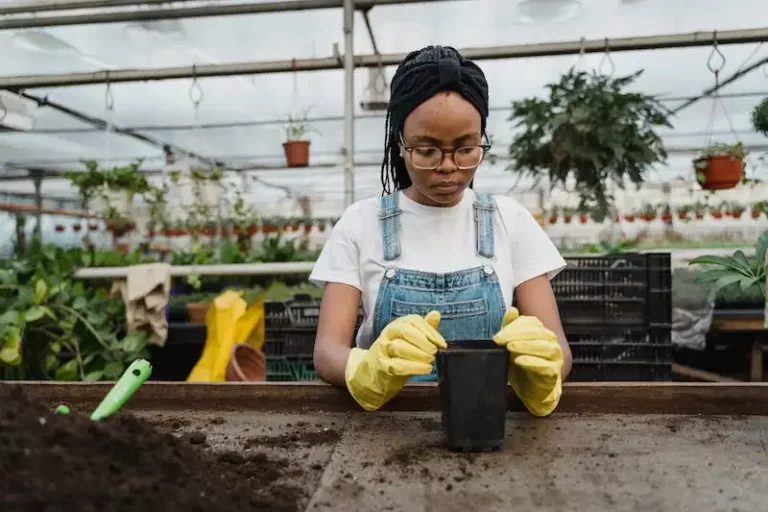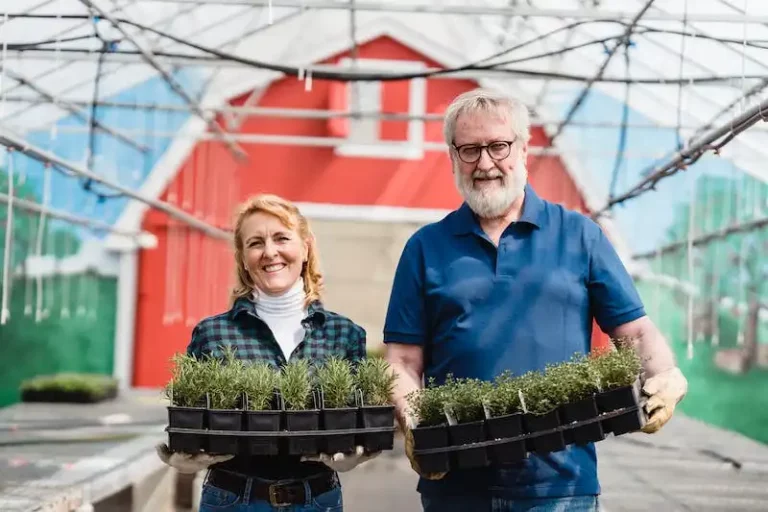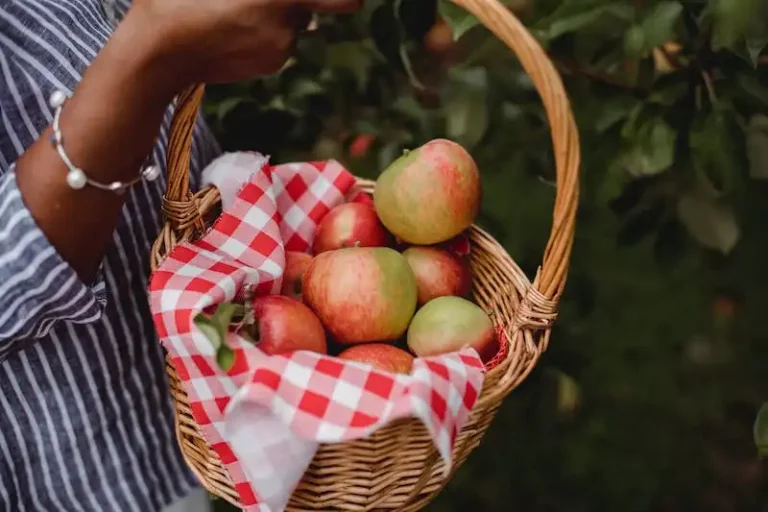Genovese basil is a variety of basil plants that is widely known for its aromatic leaves and multiple uses. This type of basil, which has the scientific name Ocimum basilicum, belongs to the Lamiaceae family of flowering plants. Genovese basil is an annual herb, meaning it completes its life cycle within one year. It is a popular choice among gardeners and cooks due to its delightful fragrance and flavorful taste.
The leaves of Genovese basil are a rich, dark green color with a slightly oval shape. They are often used in Italian cuisine, specifically in the preparation of pesto sauce. This basil variety can be grown from seeds or transplanted seedlings. If grown from seeds, it is best to start them indoors and then transplant them outside after the danger of frost has passed. Genovese basil plants require a warm, sunny location with well-drained soil.
Instructions for growing and caring for Genovese basil include providing sufficient water and light. The plants should be watered regularly, but care should be taken to avoid overwatering, as this can lead to damping off, a fungal disease that can kill the seedlings. The plants also require a minimum of 6 hours of direct sunlight each day. To achieve stronger and more compact plants, it is recommended to frequently pinch or clip off the tops of the plants, leaving three sets of leaves at the bottom.
Genovese basil plants typically take between 60 and 90 days to reach maturity. As they mature, their leaves become more flavorful. Harvesting can be done by cutting the leaves with a pair of scissors or by pinching them off with fingers. It is important to avoid removing more than one-third of the plant at a time, as this can stress the plant and affect its overall health. Regular harvests help prevent the plants from flowering and going to seed, which can negatively impact leaf production and flavor.
In terms of pests and diseases, Genovese basil can be susceptible to aphids and Japanese beetles. Aphids can be controlled by spraying the plants with a gentle soap and water solution. Japanese beetles can be handpicked and removed from the plants. It is also important to keep the plants well-spaced to prevent the spread of diseases. Genovese basil plants should be grown in rotation to prevent the buildup of pathogens in the soil.
In conclusion, Genovese basil is a wonderful addition to any garden or kitchen. Its notes of sweet and spicy flavors make it a versatile herb for various culinary applications. With proper care and attention, this herb will provide an abundant harvest of healthy and flavorful leaves throughout the growing season.
Genovese Basil
Genovese Basil is a popular variety of the herb basil. Its Latin name is Ocimum basilicum, and it belongs to the family Lamiaceae. This annual herb is known for its fragrant leaves and is commonly used in Italian cuisine.
Genovese Basil plants can be grown from seeds or purchased as potted plants. If you choose to grow them from seeds, you can start the germination process indoors about 4-6 weeks before the last frost date. Follow the instructions on the seed packet for details on how to sow the seeds. Once the seedlings have reached a sufficient size, they can be transplanted to their final location outdoors.
Genovese Basil plants require full sun and well-drained soil to thrive. They need to be watered regularly, but be careful not to overwater as this can lead to damping off. Pruning the plants by clipping the stems above a set of leaves will encourage bushier growth and improved leaf production.
Frost is a threat to Genovese Basil plants, as they are not frost tolerant. It is recommended to protect the plants from frost or move them indoors when the temperature drops. Flower buds should be removed to prolong the life of the plants and encourage more leaf growth.
Aphids are a common pest that can infest Genovese Basil plants. Regular inspection and treatment with organic insecticides can help control aphid populations and keep the plants healthy.
Genovese Basil plants usually reach maturity within 60-90 days after being direct-seeded or transplanted. The leaves can be harvested as needed, and the plants will continue to produce new growth. Harvesting by pinching off the leaves, leaving a few leaves on each stem, will ensure the plants remain productive.
Genovese Basil is a hybrid variety, resulting from a cross between different basilicum varieties. The offspring of this cross are stable and will breed true to their parent plants. It is a popular choice for gardeners and cooks due to its quick and abundant growth, as well as its strong and distinct flavor.
Shipping status: We promise to ship Genovese Basil seeds quickly and provide detailed information and care instructions. Our seeds are high-quality and guaranteed to germinate. If you have any questions or need further information about growing Genovese Basil, feel free to contact us. We are here to help!
What Is Genovese Basil Learn About Genovese Basil Growing And Care
Genovese Basil is a popular herb that is commonly used in cooking. It is an annual plant that is easy to grow and care for. Genovese Basil is a cross between two different basil varieties, resulting in a plant with improved attributes and a unique flavor.
The flowers of Genovese Basil are small and white, and they typically appear in the second year of growth. These flowers are not typically harvested for culinary use, but they can add a touch of beauty to the plant.
Genovese Basil is commonly used in Italian cuisine, particularly in pesto sauces. The leaves of this herb are harvested by clipping the stems just above a set of healthy leaves. It is best to harvest Genovese Basil in the morning when the leaves are at their freshest.
This herb can be grown both indoors and outdoors, depending on the weather and growing conditions. Genovese Basil prefers full sunlight and well-draining soil. It is important to provide regular watering and the right amount of light to ensure healthy growth.
When growing Genovese Basil in outdoor gardens, it is best to start the seeds indoors. This will give the plants a head start and improve germination rates. Genovese Basil can also be grown using hydroponic systems or in soilless growing mediums.
One of the key features of Genovese Basil is its strong flavor and aroma. It adds a fresh and aromatic taste to any meal it is used in. Whether used fresh or dried, Genovese Basil does not fail to deliver on its promise of flavor and satisfaction.
Genovese Basil is a popular herb that is frequently used in both culinary and agricultural settings. Its Latin name is Ocimum basilicum. Genovese Basil is an easy-to-grow herb, even for beginners. With the right care and growing conditions, anyone can successfully grow this herb and enjoy its many uses.
One important note about Genovese Basil is that it may attract beetles. If you notice any beetles on your plants, it is important to promptly treat them to prevent damage to the leaves and stems.
In summary, Genovese Basil is a versatile herb with many features and uses. Whether you are growing it for cooking or simply enjoy its fragrance and beauty, this herb is a great addition to any garden. With proper care and attention, your Genovese Basil plants will thrive and provide you with a bountiful harvest.
What is Genovese Basil
Genovese Basil, or Ocimum basilicum, is a popular variety of basil that is commonly used in cooking. It is a member of the Lamiaceae family and is native to the tropical regions of Asia and Africa.
Genovese Basil is known for its strong aroma and flavor, which is often described as sweet and slightly spicy. It is frequently used in Italian cuisine, particularly in dishes such as pesto sauce, caprese salad, and pasta dishes. The leaves of the Genovese Basil plant can be used either fresh or dried.
This annual herb features deep green leaves that grow in pairs along long, slender stems. The plant can reach a height of up to 2 feet and has a bushy growth habit. Genovese Basil plants produce small, white flowers in spikes that add a touch of beauty to the garden.
If you are interested in growing Genovese Basil, it is important to know that it prefers full sun and well-drained soil. It can be grown from seeds or propagated from stem cuttings. The seeds of Genovese Basil are small and weigh approximately 0.1 ounce per 1000 seeds (0.3 grams per 1000 seeds). Germination usually occurs within 5 to 10 days under favorable conditions.
To grow Genovese Basil from seeds, they can be planted directly into the ground after the danger of frost has passed and the soil has warmed. The seeds should be sown shallowly, approximately 1/4 inch deep, and spaced about 10 to 12 inches apart. The plants should be watered regularly to prevent wilting and should be fed with a balanced fertilizer according to the instructions given.
The life cycle of Genovese Basil usually lasts for 60 to 90 days, depending on the growing conditions and varietys maturity. Harvesting can begin when the plants reach a height of 6 to 8 inches. The leaves can be harvested by clipping the stem just above a pair of leaves. Frequently harvesting the leaves will promote the growth of new leaves and ensure a continuous supply.
Genovese Basil can also be grown hydroponically, using soil-less growing systems. When growing basil hydroponically, it is important to provide the plants with the right balance of nutrients and oxygen. Hydroponically grown Genovese Basil has been shown to have improved flavor and aroma compared to traditionally grown plants.
In conclusion, Genovese Basil is a versatile herb that adds flavor and aroma to many dishes. Whether you choose to grow it in your garden or in a hydroponic system, Genovese Basil is a plant that is sure to improve your meals and demonstrate the cross between good taste and healthy production.
How to Grow Genovese Basil Plants
Genovese basil is a popular variety of basilicum that is known for its rich flavor and aromatic leaves. It is easy to grow and can be a great addition to any garden or herb collection. Here are some steps to help you successfully grow Genovese basil plants:
1. Start with high-quality seeds: Begin by obtaining high-quality Genovese basil seeds from a reliable source. Look for seeds that are fresh and free from any diseases or damage.
2. Sow the seeds: Genovese basil seeds should be sown indoors about 6-8 weeks before the last frost date in your area. Sow the seeds in a well-draining soilless mix, covering them lightly with soil.
3. Provide sufficient light: Place the seed tray in a location that receives direct sunlight for at least 6-8 hours a day. If you don’t have access to direct sunlight, you can use a grow light to provide the necessary light for germination and growth.
4. Maintain optimal temperature: Genovese basil plants thrive in warm temperatures. The ideal temperature range for germination is between 70-85°F (21-29°C). Once the seeds have germinated, provide a slightly cooler temperature of around 60-70°F (15-21°C) for healthy growth.
5. Water regularly: Keep the soil consistently moist, but not soggy. Water the plants when the top inch of soil feels dry to the touch. Avoid overwatering, as this can lead to damping off disease.
6. Transplant to larger containers: When the seedlings have developed at least two sets of true leaves, they are ready to be transplanted to larger containers. Use a well-draining soil mix and provide sufficient space for the roots to grow.
7. Pinch and clip: To encourage bushier growth, pinch off the top set of leaves once the seedlings reach about 6 inches in height. Regularly clip the leaves and stems for use in cooking, leaving at least two sets of leaves on the plant to promote continued growth.
8. Feed your plants: Genovese basil plants benefit from regular feeding to ensure healthy and robust growth. Use a balanced liquid fertilizer at half the recommended strength every 2-3 weeks.
9. Protect from pests: Keep an eye out for common basil pests such as aphids, beetles, and spider mites. If necessary, treat the plants with organic insecticidal soap or neem oil to control the infestation.
10. Harvest and enjoy: Genovese basil plants usually reach maturity within 60-90 days. Harvest the leaves and stems as needed for fresh use or dry them for later use. Enjoy the rich flavor and aroma of Genovese basil in your favorite recipes!
By following these simple steps, you can successfully grow Genovese basil plants and enjoy their many culinary uses. Whether it’s in a fresh pesto sauce or added to a delicious pasta meal, Genovese basil is sure to enhance the flavors of your dishes.




